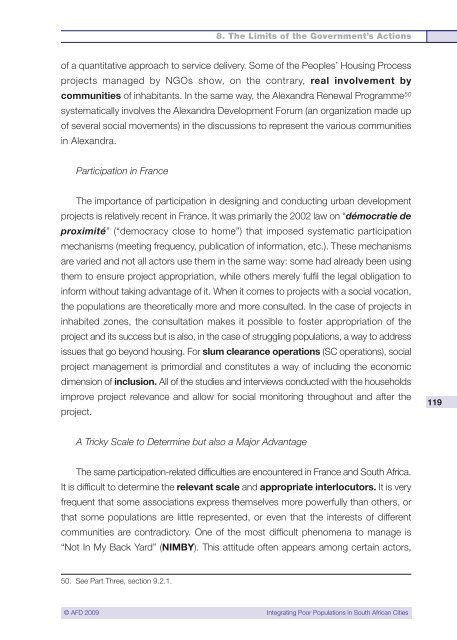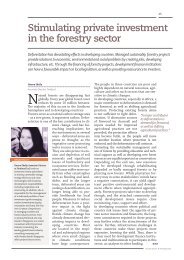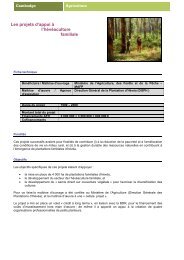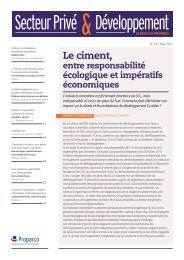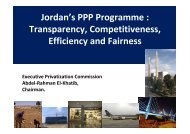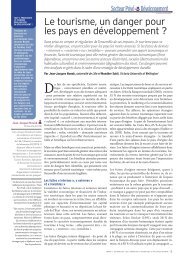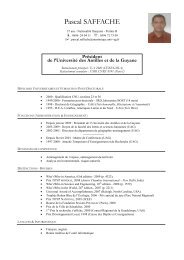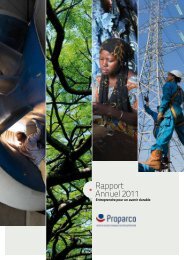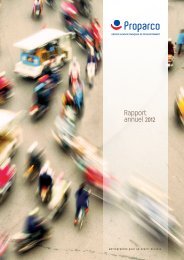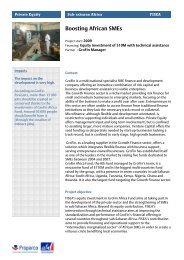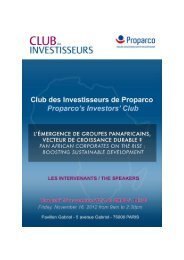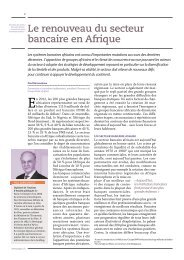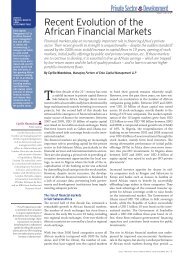Integrating Poor Populations in South African Cities - Agence ...
Integrating Poor Populations in South African Cities - Agence ...
Integrating Poor Populations in South African Cities - Agence ...
You also want an ePaper? Increase the reach of your titles
YUMPU automatically turns print PDFs into web optimized ePapers that Google loves.
8. The Limits of the Government’s Actions<br />
of a quantitative approach to service delivery. Some of the Peoples’ Hous<strong>in</strong>g Process<br />
projects managed by NGOs show, on the contrary, real <strong>in</strong>volvement by<br />
communities of <strong>in</strong>habitants. In the same way, the Alexandra Renewal Programme 50<br />
systematically <strong>in</strong>volves the Alexandra Development Forum (an organization made up<br />
of several social movements) <strong>in</strong> the discussions to represent the various communities<br />
<strong>in</strong> Alexandra.<br />
Participation <strong>in</strong> France<br />
The importance of participation <strong>in</strong> design<strong>in</strong>g and conduct<strong>in</strong>g urban development<br />
projects is relatively recent <strong>in</strong> France. It was primarily the 2002 law on “démocratie de<br />
proximité” (“democracy close to home”) that imposed systematic participation<br />
mechanisms (meet<strong>in</strong>g frequency, publication of <strong>in</strong>formation, etc.). These mechanisms<br />
are varied and not all actors use them <strong>in</strong> the same way: some had already been us<strong>in</strong>g<br />
them to ensure project appropriation, while others merely fulfil the legal obligation to<br />
<strong>in</strong>form without tak<strong>in</strong>g advantage of it. When it comes to projects with a social vocation,<br />
the populations are theoretically more and more consulted. In the case of projects <strong>in</strong><br />
<strong>in</strong>habited zones, the consultation makes it possible to foster appropriation of the<br />
project and its success but is also, <strong>in</strong> the case of struggl<strong>in</strong>g populations, a way to address<br />
issues that go beyond hous<strong>in</strong>g. For slum clearance operations (SC operations), social<br />
project management is primordial and constitutes a way of <strong>in</strong>clud<strong>in</strong>g the economic<br />
dimension of <strong>in</strong>clusion. All of the studies and <strong>in</strong>terviews conducted with the households<br />
improve project relevance and allow for social monitor<strong>in</strong>g throughout and after the<br />
project.<br />
119<br />
A Tricky Scale to Determ<strong>in</strong>e but also a Major Advantage<br />
The same participation-related difficulties are encountered <strong>in</strong> France and <strong>South</strong> Africa.<br />
It is difficult to determ<strong>in</strong>e the relevant scale and appropriate <strong>in</strong>terlocutors. It is very<br />
frequent that some associations express themselves more powerfully than others, or<br />
that some populations are little represented, or even that the <strong>in</strong>terests of different<br />
communities are contradictory. One of the most difficult phenomena to manage is<br />
“Not In My Back Yard” (NIMBY). This attitude often appears among certa<strong>in</strong> actors,<br />
50. See Part Three, section 9.2.1.<br />
© AFD 2009 <strong>Integrat<strong>in</strong>g</strong> <strong>Poor</strong> <strong>Populations</strong> <strong>in</strong> <strong>South</strong> <strong>African</strong> <strong>Cities</strong>


